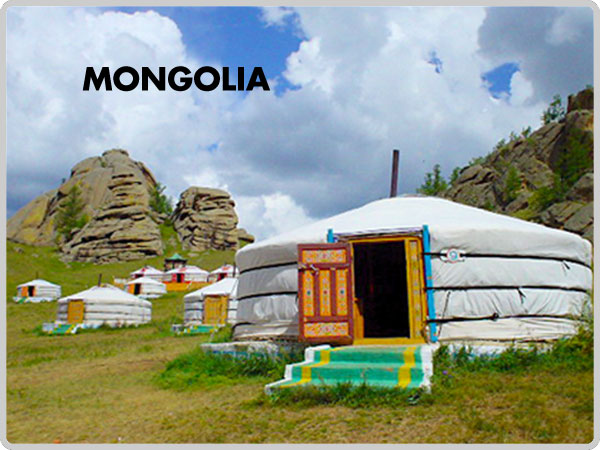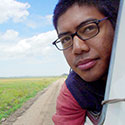
ENTRIES FROM THE GLOBAL TRIP BLOG CHRONICLES
Surrogate Parents
From the trip blog: "The Global Trip 2004: Sixteen Months Around The World"
Posted August 19, 2004
DAY 301: Ulan Baatar (pronounced Ulan BAAT’r), which means “Red Hero,” has been the capital of Mongolia since its “independence” from the Manchu Dynasty by help of the Russian Bolsheviks (“Independence” is in quotes because Mongolia eventually fell under the strong political and cultural influence of the Soviets.) The man responsible for the defeat of the Manchus and the eventual formation of the People’s Government of Mongolia was Sükhbaatar (literally “Axe Hero”) who had formed the army that teamed up with the Bolsheviks. A statue of this national hero stands in the middle of Ulan Baatar’s Sükhbaatar Square, where a mausoleum that once held his remains stands at the northern side, flanked by the Parliament House.
The Return of Ghenghis Khan
From the trip blog: "The Global Trip 2004: Sixteen Months Around The World"
Posted August 19, 2004
DAY 302: “Between the National History Museum and the Natural History Museum, which one is better?” I asked Tatiana at her Legend Tours’ office after arranging an excursion to the nearby Mongolian countryside the next day.
“I think the Natural History Museum,” she answered. “But I think you have time for both.”
Little Yurt On The Prairie
From the trip blog: "The Global Trip 2004: Sixteen Months Around The World"
Posted August 23, 2004
DAY 303: I’ve titled this one “Little Yurt On The Prairie,” playing off of the title of the book and 70s television show Little House On The Prairie. I never read the book, nor do I remember the TV show that well, just that in the introduction, young Laura Ingalls (played by young Melissa Gilbert) trips and falls as she runs down a hill. I remember being it really funny.
Anyway, if you’ve followed The Blog through my voyage through Siberia, it probably didn’t come to any surprise that once I got to Ulan Baatar, Mongolia, it too was not a deserted city in the middle of nowhere. To me, unless a city has a good vibe — like New York, Paris, Berlin — it is pretty generic. As pleasant as Ulan Baatar was — particularly my host family—it was just another modern industrial city after seeing its cultural sights and museums, and so for my last three full days in Mongolia, I decided to spend it in Mongolia’s countryside.
Wild Wild East
From the trip blog: "The Global Trip 2004: Sixteen Months Around The World"
Posted August 24, 2004
DAY 304: I’ve never been a cowboy in the traditional old American Wild Wild West sort of way, but I’ve seen a lot of classic Westerns. Actually, that’s not true, I’ve only see a couple — or three if you include Mel Brooks’ western parody Blazing Saddles. In any case, the point I’m trying to make is that the landscape of the Gorkhi-Terelj National Park was reminiscent of being in the old American west — especially when you are on the back of a horse all day wearing a sort of cowboy hat.
Will The Real Mongolian Please Stand Up?
From the trip blog: "The Global Trip 2004: Sixteen Months Around The World"
Posted August 24, 2004
DAY 305: Being of Filipino descent, my physical appearance blended in pretty well in South America, making me able to walk amongst the locals “undetected” — until I tried to say something and my cover was blown. I bring this up because I sort of blended in as a Mongolian as well (as long as I kept my mouth shut), and I contrasted my guide/driver Tatiana, a blonde, pale-skinned European Russian-born mother who was fluent in Mongolia, having lived in Ulan Baatar for quite a while with her baby son.
Chopsticks and Train Tracks
From the trip blog: "The Global Trip 2004: Sixteen Months Around The World"
Posted August 25, 2004
DAY 306: I woke up early that morning in Ulan Baatar to catch my 8:05 a.m. train to Beijing, China. Everything was packed and read to go by seven — except for one thing: my watch.
 When he’s not making a living as an
When he’s not making a living as an 